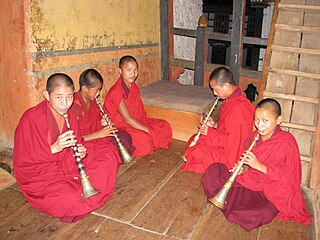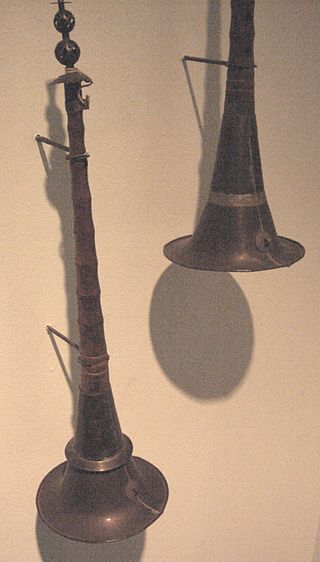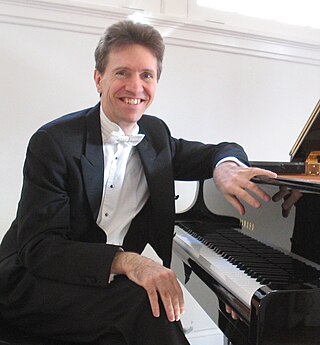Related Research Articles

"Aegukga", often translated as "The Patriotic Song", is the national anthem of the Republic of Korea. It was adopted in 1948, the year the country was founded. Its music was composed in the 1930s and arranged most recently in 2018; its lyrics date back to the 1890s. The lyrics of "Aegukga" were originally set to the music of the Scottish song "Auld Lang Syne" before Ahn Ik-tae composed a unique melody specifically for it in 1936. Before the founding of South Korea, the song, set to the music of "Auld Lang Syne", was sung, as well when Korea was under Japanese rule by dissidents. The version set to the melody composed by Ahn Ik-tae was adopted as the national anthem of the Korean exile government, which existed during Korea's occupation by Japan from the early 1910s to the mid-1940s.
Ukrainian music covers diverse and multiple component elements of the music that is found in the Western and Eastern musical civilization. It also has a very strong indigenous Slavic and Christian uniqueness whose elements were used among the areas that surround modern Ukraine.

The music of Bhutan is an integral part of its culture and plays a leading role in transmitting social values. Traditional Bhutanese music includes a spectrum of subgenres, ranging from folk to religious song and music. Some genres of traditional Bhutanese music intertwine vocals, instrumentation, and theatre and dance, while others are mainly vocal or instrumental. The much older traditional genres are distinguished from modern popular music such as rigsar.

Ernst Toch was an Austrian composer of European classical music and film scores, who from 1933 worked as an émigré in Paris, London and New York. He sought throughout his life to introduce new approaches to music.

Suona, also called dida, laba or haidi, is a traditional double-reeded Chinese musical instrument. The Suona's basic design originated in ancient Iran, then called "Sorna". Suona appeared in China around the 3rd century.Popular in parts of northern and southern China, including Shandong, Henan, Hebei, Shanxi, Shaanxi, Gansu, Northeast China, Guangdong, Fujian, and other regions. It had a distinctively loud and high-pitched sound, and was used frequently in Chinese traditional music ensembles, particularly in those that perform outdoors. It was an important instrument in the folk music of northern China, particularly in provinces of Shandong and Henan, where it has long been used for festival and military purposes. It is still being used, in combination with sheng mouth organs, gongs, drums, and sometimes other instruments in weddings and funeral processions. Such wind and percussion ensembles are called chuida or guchui. Stephen Jones has written extensively on its use in ritual music of Shanxi. It was also common in the ritual music of Southeast China. In Chinese culture it was an essential element of ritual music that accompanied Daoist performances of both auspicious and inauspicious rites, i.e., those for both the living and the dead. One of the most famous pieces that uses suona as the leading instrument is called "Bai Niao Chao Feng", or "Hundred Birds Worship the Phoenix". The movie Song of the Phoenix casts the rise and fall of the popularity of suona in modern Chinese musical history.Suona music is filled with tradition and innovation, and is a timeless expression of Chinese folk culture, enriching the daily lives of folk workers. Suona art was approved by the State Council to be included in the first batch of national intangible cultural heritage list on May 20, 2006.

Music of Northeast China is tied closely to the region's history. Musical traditions of the Bang Zi Theatre and folk instruments such as the Dizi, Xiao and Baijiao Gu originate in the region. Folk songs from the north east are noted for their contributions toward nationalistic music the popular communist-era song “The East is Red” based upon a traditional Northern Shaanxi melody. The popularity of western musical traditions in the Harbin province are internationally recognised with the northern city being named a ‘music city’ in 2010 by the United Nations. Contemporary folk as well as modern pop music continue to contribute to the diverse musical traditions of the region. Prominent performers from the Northeast include the mid-20th-century film composer Lei Zhenbang and pop stars Xiao Ke and Na Ying.

Alexander Nikolayevich Tcherepnin was a Russian-born composer and pianist.

Jack Gibbons is an English-born American classical composer and virtuoso pianist.
John Maynard La Montaine, also later LaMontaine, was an American pianist and composer, born in Oak Park, Illinois, who won the 1959 Pulitzer Prize for Music for his Piano Concerto No. 1 "In Time of War" (1958), which was premiered by Jorge Bolet.

The "Song of the Volga Boatmen" is a well-known traditional Russian song collected by Mily Balakirev and published in his book of folk songs in 1866. It was sung by burlaks, or barge-haulers, on the Volga River. Balakirev published it with only one verse. The other two verses were added at a later date. Ilya Repin's famous painting Barge Haulers on the Volga depicts such burlaks in Tsarist Russia toiling along the Volga.
Chen Yi is a Chinese-American composer of contemporary classical music and violinist. She was the first Chinese woman to receive a Master of Arts (M.A.) in music composition from the Central Conservatory of Music in Beijing. Chen was a finalist for the 2006 Pulitzer Prize for Music for her composition Si Ji, and has received awards from the Koussevistky Music Foundation and American Academy of Arts and Letters, as well as fellowships from the Guggenheim Foundation and the National Endowment for the Arts. In 2010, she was awarded an Honorary Doctorate from The New School and in 2012, she was awarded the Brock Commission from the American Choral Directors Association. She was elected to the American Academy of Arts and Letters in 2019.

"In Moonlight" is a song with music written by the English composer Edward Elgar in 1904 to words from the poem "An Ariette for Music. To a Lady singing to her Accompaniment on the Guitar", by Percy Bysshe Shelley (1792-1822) and published in 1832.

He Luting was a Chinese composer of the early 20th century. He composed songs for Chinese films beginning in the 1930s, some of which remain popular.

Tseten Dolma is a Tibetan soprano. She was born August 1, 1937, to a serf family in Shigatse, Tibet. Tseten was influenced by Tibetan folk music from a very young age, and first performed on stage in 1956. She is known for starring in the 1965 musical epic The East Is Red.
"Zai Na Yaoyuan De Difang" is the title and first line of a Chinese song written by Wang Luobin, a Chinese songwriter and ethnic music researcher.

Alexander Moiseyevich Veprik, also Weprik, was a Russian-(Ukrainian); Soviet) composer and music educator. Veprik is considered one of the greatest composers of the "Jewish school" in Soviet music.
Dušan Radić was a Serbian composer, university professor, and a full member of the Serbian Academy of Sciences and Arts.
Chinese song is an art form of China.
References
- ↑ Virgil K. Y. Ho Understanding Canton: Rethinking Popular Culture in the Republican ... 2005 0199282714 "Alexander Tcherepnin, a Russian composer who had performed in North China during the mid-1930s, was worried by the trend towards the 'blind imitation' of European music by Chinese musicians even when playing Chinese music. See Liu Ching-chih (1988: 27–8, 53–4, 79–82)"
- ↑ Bulletin - Page 29 National Music Council (U.S.) - 1965 "The program included "Six Chinese Songs" by the Russian-American composer, Alexander Tcherepnin, on Chinese texts translated by the composer, sung by Korean soprano Christina Cha with Mr. Garvey at the piano, ... "